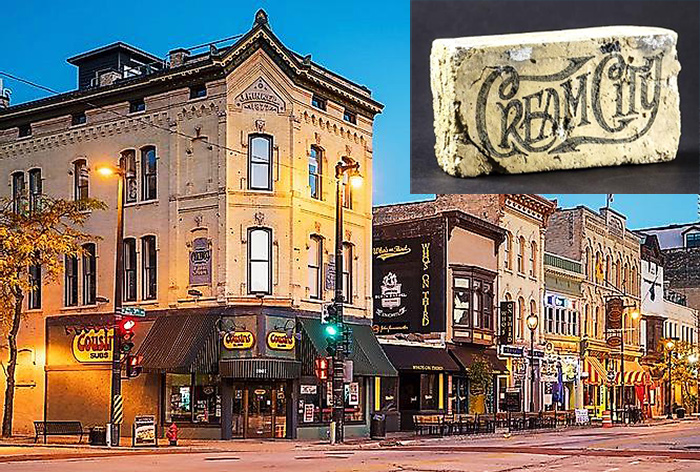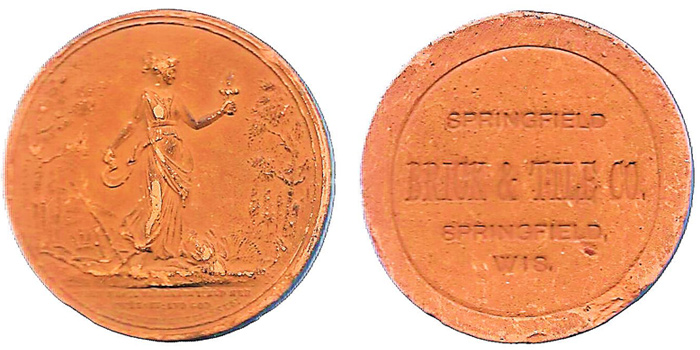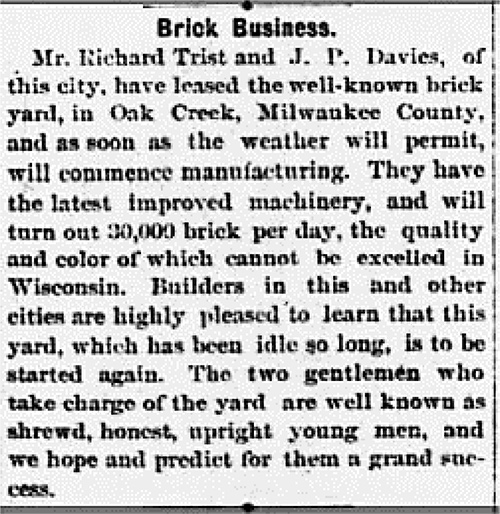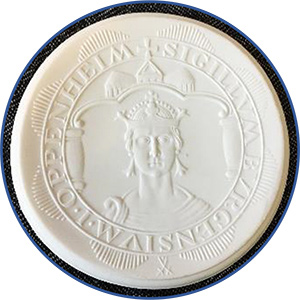
NOW Articles Written By Members
An Argument for Collecting Half Dollars
Late Night and a Russian Type Set
Old Country Coins: Newfoundland’s Rarest 5-Cent
Milwaukee Medals: Fifth Ward Constable
A look back at a common, but classic commemorative – Wisconsin’s Territorial Centennial
A side-tracked story: Mardi Gras Doubloons
A look back at a collecting specialty – the O.P.A. ration tokens of WWII
Bullion And Coin Tax Exemption – Act Now!
Is There A Twenty Cent Piece We Can Add To A Collection
Capped Bust Half Dollars: A Numismatic Legacy
U.S. Innovation Dollars: Our Most Under-Collected Coin?
My 2023 ANA Summer Seminar Adventure
>> More articles in the Archive
For more NOW Articles Written By Members,
A Medal Of Clay
by Tom Casper #982
In spring every gardener looks forward to planting a bed of flowers or vegetable garden. How annoying it is when you dig down and after a few inches in the topsoil you hit a layer of clay. Clay is not the favorite type of soil to grow anything. Although it is not welcomed in the garden, it does have many uses. The uses of clay vary widely. It is used in making bricks, floor tiles, pottery, stoneware, flowerpots, art objects, clay pigeons, dishware, and in modeling. It is also used for industrial processes such as paper making, cement production, chemical filtering, and used in the medical field.
Clay can be found in various locations throughout Wisconsin. The color of the clay, based on its composition, varies from different locations, and can be found in the colors of grey, red, blue, cream, and others.
In the 19th century Milwaukee became known as the Cream City and a number of businesses still use that phrase in their business name. It had nothing to do with our dairy industry. It comes from the color of clay found around Milwaukee, the Menomonee River Valley, and on the western banks of Lake Michigan. The clay was formed into bricks, and when heated in a kiln, took on a cream color.

Typical business district in Milwaukee. Note the Cream-colored brick buildings.
Shown below is a medal made of red clay. It measures 54mm, 6mm thick with a weight of 22 grams. The obverse features Ceres, the Roman Goddess of Agriculture, grain crops, fertility, and motherly relationships. Her right hand holds a sickle. Her left hand grasps a fist of grain. At her feet is a plow and other agricultural implements. At the bottom is a bible quote from the Old Testament, Psalm 67: Verses 5-6, THEN SHALL THE EARTH YIELD HER/INCREASE: AND GOD/EVEN OUR GOD SHALL BLESS US. The reverse reads SPRINGFIELD/BRICK & TILE CO./SPRINGFIELD, /WIS.

A 1901 State of Wisconsin bulletin, “Clays and Clay Industries of Wisconsin”, details this company. “Springfield is located near the central part of Walworth County and about eight miles from Elkhorn. (It is now unincorporated and part of the town of Lyons). The Springfield Brick and Tile Co., of which R. Trist, is owner, is located about one-half mile south of the village. The yard was opened in 1896 and operated each year since. The clay which occurs at this place burns a beautiful cherry red and the brick and tile manufactured therefrom are of excellent quality. From all appearances this is one of the best clays in southern Wisconsin for the manufacture of red flowerpots, drain tile, and brick. The clay might also be used in the manufacture of terra cotta. For a number of years, the clay from this locality has been used by the Edgerton Art Pottery Works for the manufacture of ornamental pottery.”

The owner Richard Trist was born in 1849 in Devonshire, England and came to America in 1853. He arrived in Milwaukee County with his parents. In 1863 during the Civil War, he enlisted in the Army at age 16 and became a drummer boy for Company B, 1st Heavy Artillery Regiment. He mustered out in 1865. In 1866 he was shot in a hunting accident and resulting in the loss of his left arm. He arrived in Racine in 1868 and permanently resided there. According to The Journal Times of Racine, in 1882, Trist and a partner started a brick business in Oak Creek, WI. There is no further information concerning this brick business, however, for 25 years Trist was the general freight and passenger agent for the Chicago & Northwestern Railroad. He died in 1928 at the age of 81 and is buried in Racine.

It is not unheard of for numismatic items to be made of clay. In the 1920’s Germany made porcelain (which is made from clay) coins. At left is an example of a white porcelain coin from Germany.
The Springfield Brick and Tile Co. medal is unusual for several reasons. It is made of clay in place of typical metals of gold, silver, or bronze. The obverse contains a bible quote on an advertising medal. This obverse bible quote is coupled with a depiction of a Roman Goddess of Mythology. The medal was not struck but molded. The piece was made by a non-numismatist. These reasons make it interesting, as well as an unusual and scarce piece. While clay is prone to chipping as can be seen on this piece, it has managed to survive for more than one hundred years.
Have an interesting numismatic topic you’d like to share with your fellow NOW members?
Send your article to evan.pretzer@protonmail.com today!!!